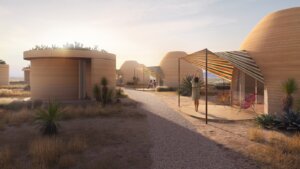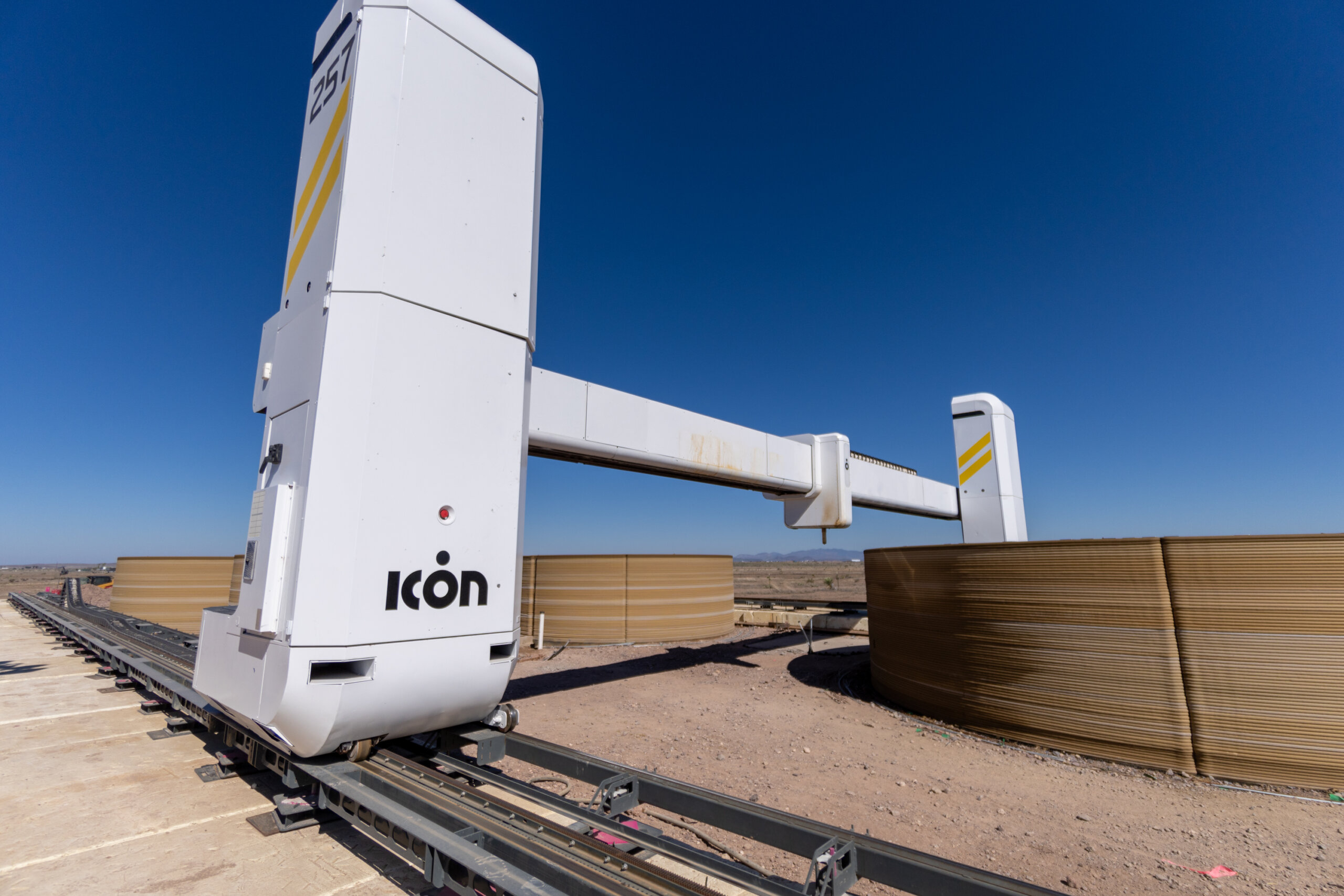
The first 3D-printed house in the US was unveiled just over six years ago. Since then, homes have been printed all over the country and the world, from Virginia to California and Mexico to Kenya. If you’re intrigued by the concept but not sure whether you’re ready to jump on the bandwagon, you’ll soon be able to take a 3D-printed dwelling for a test run—by staying in the world’s first 3D-printed hotel.
The hotel is under construction in the city of Marfa, in the far west of Texas. It’s an expansion of an existing hotel called El Cosmico, which until now has really been more of a campground, offering accommodations in trailers, yurts, and tents. According to the property’s website, “the vision has been to create a living laboratory for artistic, cultural, and community experimentation.” The project is a collaboration between Austin, Texas-based 3D printing construction company Icon, architecture firm Bjarke Ingels Group, and El Cosmico’s owner, Liz Lambert.
El Cosmico will gain 43 new rooms and 18 houses, which will be printed using Icon’s gantry-style Vulcan printer. Vulcan is 46.5 feet (14.2 meters) wide by 15.5 feet (4.7 meters) tall, and it weighs 4.75 tons. It builds homes by pouring a proprietary concrete mixture called Lavacrete into a pattern dictated by software, squeezing out one layer at a time as it moves around on an axis set on a track. Its software, BuildOS, can be operated from a tablet or smartphone.

One of the benefits of 3D-printed construction is that it’s much easier to diverge from conventional architecture and create curves and other shapes. The hotel project’s designers are taking full advantage of this; far from traditional boxy hotel rooms, they’re aiming to create unique architecture that’s aligned with its natural setting.

“By testing the geometric boundaries of Icon’s 3D-printed construction, we have imagined fluid, curvilinear structures that enjoy the freedom of form in the empty desert. By using the sand, soils, and colors of the terroir as our print medium, the circular forms seem to emerge from the very land on which they stand,” Bjarke Ingels, the founder and creative director of Bjarke Ingels Group, said in a press release.
Renderings of the completed project and photos of the initial construction show circular, neutral-toned structures that look like they might have sprouted up out of the ground. Don’t let that fool you, though—the interiors, while maybe not outright fancy, will be tastefully decorated and are quite comfortable-looking.

At first glance, Marfa seems like an odd choice for something as buzzy as a 3D-printed hotel. The town sits in the middle of the hot, dry Texas desert; it has a population of 1,700 people; and the closest airport is in El Paso, a three-hour drive away. But despite its relative isolation, Marfa is a hotspot for artists and art lovers and has a unique vibe all its own that draws flocks of tourists (according to Vogue, an estimated 49,000 people visited Marfa in 2019).
El Cosmico is not only expanding, it’s relocating to a 60-acre site on the outskirts of Marfa. Along with the 3D-printed accommodations, the site will have a restaurant, pool, spa, and communal facilities. Most of the trailers and tents from the existing property will be preserved and moved to the new site.
The project broke ground last month, and El Cosmico 2.0 is slated to open in 2026.
How much will it cost you to give 3D-printed construction a test run? Similar to how the market prices of commercial 3D-printed homes haven’t been dramatically lower than conventional houses, it seems 3D-printed hotel rooms will cost about the same as regular hotel rooms, or maybe more: Reservations for the new rooms can’t yet be booked, but they’re predicted to cost between $200 and $450 per night.
Image Credit: Icon
* This article was originally published at Singularity Hub

0 Comments